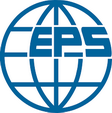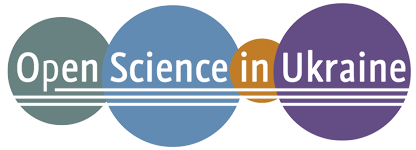Software Processing Features of Photoplethysmography Signals
DOI:
https://doi.org/10.15330/pcss.26.1.105-110Keywords:
non-invasive monitoring, heart rate, saturation, computer system, signal processing, thermoelectric generatorAbstract
The study explores the potential of using photoplethysmography to analyze human health. This method is considered a promising non-invasive technique for monitoring biomedical indicators such as heart rate, respiratory rate, cardiovascular system condition, and blood oxygen saturation.
The study analyzes methods for processing photoplethysmography signals and develops an algorithm for signal analysis. This algorithm compensates for respiratory signal modulation, quickly identifies key extremum points, and determines heart rate, respiratory rate, cardiovascular system indicators, and blood oxygen saturation. The application of this algorithm places minimal load on the microcontroller, enabling the development of a low-power human health monitoring system.
References
R.G. Khemani, N.R. Patel, R.D. Bart, C.J.L. Newth, Comparison of the Pulse Oximetric Saturation/Fraction of Inspired Oxygen Ratio and the PaO2 Fraction of Inspired Oxygen Ratio in Children, Chest, 135(3), 662 (2009); https://doi.org/10.1378/chest.08-2239.
J.Allen, Photoplethysmography and its application in clinical physiological measurement, Physiological Measurement, 28(3), R01 (2007); https://doi.org/10.1088/0967-3334/28/3/R01.
J.H. Kwon, S.E. Kim, N.H. Kim, E.C. Lee, J.H. Lee, Preeminently Robust Neural PPG Denoiser, Sensors, 22(1), 2082 (2022); https://doi.org/10.3390/s22062082.
J. Moraes, M. Rocha, G. Vasconcelos, J. Vasconcelos Filho, V. de Albuquerque, A. Alexandria, Advances in Photopletysmography Signal Analysis for Biomedical Applications, Sensors, 18(6), 1894 (2018); https://doi.org/10.3390/s18061894.
K.V. Pozhar, M.O. Mikhailov, E.L. Litinskaia, Near-Infrared Spectroscopy for Noninvasive Measurement of Blood Glucose: Problems, Progress, Tasks, Biomed Eng, 56, 64 (2022); https://doi.org/10.1007/s10527-022-10168-5.
V.I. Matyash, N.V. Ralets, L.V. Berezina, Clinical characteristics of autonomic disorders, Journal of Clinical and Experimental Medical Research, (2), 252 (2013).
S.V. Pavlov, T.I. Kozlovska, V.B. Vasylenko, Optoelectronic means of diagnosing human pathologies related to peripheral circulation: monograph (VNTU, Vinnytsia, 2014).
B.S. Dzundza, I.T. Kohut, V.I. Holota, L.V. Turovska, M.V. Deichakivskyi, Principles of construction of hybrid microsystems for biomedical applications, Physics and Chemistry of Solid State, 23(4), 776 (2022); https://doi.org/10.15330/pcss.23.4.776-784.
I.T. Kogut, B.S. Dzundza, V.I. Holota, V.V. Fedoriuk, L.І. Nykyruy, Modeling of integrated signal converters for biomedical sensor microsystems, Physics and Chemistry of Solid State, 24(3), 515 (2023); https://doi.org/10.15330/pcss.24.3.515-519.
V.I. Holota, I. Kogut, A. Druzhinin, Y. Khoverko, High sensitive active MOS photo detector on the local 3D SOI-structure, Advanced Materials Research, 854(1), 45 (2014); https://doi.org/10.4028/www.scientific.net/AMR.854.45.
Elisa Mejıa-Mejıa, John Allen, Karthik Budidha, Chadi El-Hajj, Technology, Signal Analysis and Applications, Photoplethysmography signal processing and synthesis, Photoplethysmography, 69 (2022); https://doi.org/10.1016/B978-0-12-823374-0.00015-3.
P.O. Mykhailova, S.V. Zubkov, Assessment of the relationship between respiratory and cardiovascular system function using the photoplethysmography method, Biomedical Engineering and Technology, 1(1), 104 (2018).
M. Elgendi, On the analysis of fingertip photoplethysmogram signals, Current Cardiology Reviews, 8(1), 14 (2012); https://doi.org/10.2174/157340312801215782.
E.J. Arguello Prada, R.D. Serna Maldonado, A novel and low-complexity peak detection algorithm for heart rate estimation from low-amplitude photoplethysmographic (PPG) signals, Journal of Medical Engineering and Technology, 42(8), 569 (2018); https://doi.org/10.1080/03091902.2019.1572237.
P. van Gent, Traffic Psychology and Behaviour HeartPy: A novel heart rate algorithm for the analysis of noisy signals, Transportation Research Part F, 66, 368 (2019); https://doi.org/10.1016/j.trf.2019.09.015.
M. Aboy, An automatic beat detection algorithm for pressure signals, IEEE Transactions on Biomedical Engineering 52(10), 1662 (2005). https://doi.org/10.1109/TBME.2005.855725.
B.N. Li, M.C. Dong, M.I. Vai, On an automatic delineator for arterial blood pressure waveforms, Biomedical Signal Processingand Control, 5(1), 76 (2010); https://doi.org/10.1016/j.bspc.2009.06.002.
N.J. Conn, D.A. Borkholder, Wavelet based photoplethysmogram foot delineation for heart rate variability applications, IEEE Signal Processing in Medicine and Biology Symposium (2013); https://doi.org/10.1109/SPMB.2013.6736782.
D.M. Freik, B.S. Dzundza, M.A. Lopyanko, Ya.S. Yavorsky, A.I. Tkachuk, R.B. Letsyn, Structure and electrical properties of thin films of pure and bismuth-doped lead telluride, Journal of Nano- and Electronic Physics, 4(2), 02012 (2012).
Downloads
Published
How to Cite
Issue
Section
License
Copyright (c) 2025 B.S. Dzundza, S.V. Dombrovskyi, M.V. Shtun, O.O. Chinchoy, A.V. Morgun

This work is licensed under a Creative Commons Attribution 3.0 Unported License.









